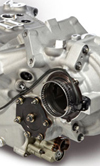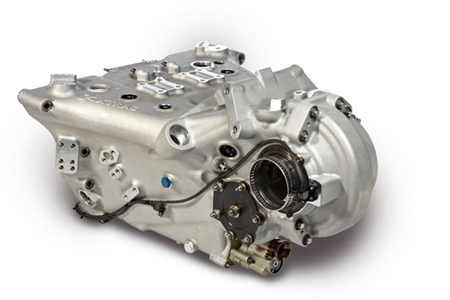The gear change
 Like millions of other followers of Formula One, I look forward each year to sitting in front of the TV and watching both practice and race of every single Grand Prix throughout the season. Also like many others, I have done this for probably the best part of 30 years, for as long as the sport has been covered by prime-time TV.
Like millions of other followers of Formula One, I look forward each year to sitting in front of the TV and watching both practice and race of every single Grand Prix throughout the season. Also like many others, I have done this for probably the best part of 30 years, for as long as the sport has been covered by prime-time TV.
I always enjoy some of the on-board coverage looking over the driver's shoulder. In particular, I marvel at the way that 750-plus bhp can be tamed by our heroes with such apparent ease, changing up and down the gearbox in no more time than it takes to wiggle your fingers.
I think the recent introduction of engine speed graphics allied to the sound emphasises just how much progress has been made in the gear change technology, in that every change is crisp and precise and, from an engineering point of view, deeply satisfying. I only wish we could compare it with on-board footage of similar gear changes 30 or maybe even 40 years ago, when shifting was done manually and the skill left more to the driver than perhaps the engineer.
Using sequential shift transmission technology, the speed with which the engine unloads and re-introduces the load back into gearbox is now the critical factor. One way to do this, and one offered by many aftermarket engine management system suppliers, is a simple ignition cut. Closing the throttle generally takes far too long, and cutting the fuelling introduces fuel wall-wetting issues of adsorption and de-adsorption in the intake system and creates lean 'spikes' generally indicating a loss of fuel control.

Cutting the sparks for a definite period (measured in milliseconds) is probably the simplest way but the method of reinstating it afterwards can be tricky. In many systems the ignition will be progressively ramped back in at the same ignition timing but with the order in which cylinders are brought back to life dependent on the engine configuration and firing order. In some circumstances when the grip available is low, the engine torque output may be reduced by retarding the ignition timing as well. This will then ramped back up to its previous value as soon as possible thereafter. But without any alteration to the fuelling, a simple ignition cut, no matter how short, will still leave unburned fuel passing through the engine. This will subsequently burn in the exhaust or even pass straight through the engine. Either way no useful power is generated and the fuel is to all intents wasted.
During the change gear process itself it must be remembered that all we are trying to do is to unload the gear teeth for just sufficient time for the dogs to disengage one gear and reengage the next. Carefully timed, retarding the ignition only without any ignition 'cut' and ramping up quickly back to its original value is now considered the best way to do this. Making sure that the fuel is burned in the cylinder, no matter how late in the cycle, eliminates any bore wash concerns and done quickly minimises any lost performance from the engine.
Above all, it gives the armchair engineer that deeply satisfying seamless gear change sound.
Fig. 1 - Formula One seamless shift gearbox by Xtrac
Written by John Coxon